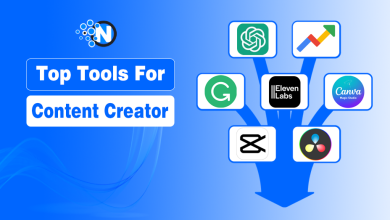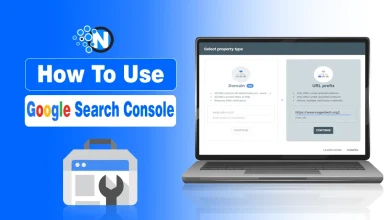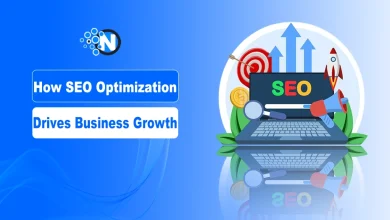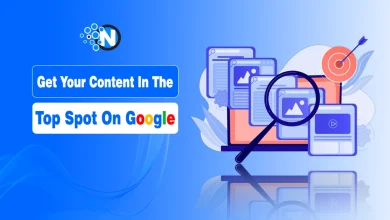
Search engines like Google judge your pages by many on-page factors. In 2025, on-page SEO is all about making your content clear, relevant, and user-friendly. This means targeting the right keywords, writing great headlines, optimizing HTML tags, and even paying attention to things like page speed and mobile-friendliness.
Below, I’ll break down the 12 most important on-page SEO fixes you should tackle, with tips on why they matter and how to implement each one. Follow these steps (and check off each item!) to boost your rankings and delight your readers.
What is On-Page SEO Checklist?
Start creating Verdict in seconds, and convert more of your visitors into leads.
An On-Page SEO Checklist is a structured list of best practices to optimize individual web pages so they rank higher in search engines and provide a better experience for users.
Unlike off-page SEO (like backlinks), on-page SEO focuses on everything you can control within your site’s content and HTML.
An on-page SEO checklist helps an individual to keep track of their tasks on the work that has been done, or remains to be accomplished, for their website.
12 Fixes for On-Page SEO Checklist 2025
Start creating Verdict in seconds, and convert more of your visitors into leads.
Next in our discussion, I am going to share a detailed On-page SEO checklist with you to make your SEO journey easier and authentic.

1. Choose the Right Target Keywords
Before you optimize any page, pick one primary keyword or phrase per page. Most importantly, think about search intent: what users are looking for when they type that query on Google.
Use keyword research tools like Ahrefs, SEMrush, MOZ, and Google Trends to find keywords with good search volume and manageable difficulty. It is better to focus each page on a single topic so Google and users immediately know what it’s about. In practice:
- Do keyword research relevant to your audience (e.g., local flower shop vs. ecommerce).
- Check if the page meets search intent (informational, transactional, etc.).
- Note related terms (synonyms/LSI) to sprinkle into your content (more below).
- Verify the People Also Ask section as per users’ search intent on Google.
💡Pro Tip:
Track your keywords in Google Search Console daily. Set up Google Search Console (GSC) first so you can see which keywords are already bringing traffic.
2. Optimize Your Title Tag
The title tag (the HTML <title>) is the most important on-page SEO element. It appears as the clickable headline on Google. Use your target keyword near the front of the title for maximum impact.
Keep titles concise (≤60 characters) so they don’t get cut off in search results. Make each title unique and descriptive, and don’t reuse the same title on multiple pages.
For example, if your keyword is “Mobile App Vulnerabilities”, a strong title might be “Top 10 Mobile App Vulnerabilities to Take Care of in 2025”.
- Include modifiers like “Top,” “2025,” or “Guide” to stand out.
- Keep it relevant. The title should promise what the page delivers.
- Avoid stuffing – make it compelling, not spammy.
💡Pro Tip:
Test your titles in a tool like the Yoast SEO plugin. These can flag titles that are too long or missing keywords, and help you front-load your main keyword.
3. Create a Click-Worthy Meta Description
The meta description is the snippet under your title in search results. Although it isn’t a direct ranking factor, a well-written description boosts click-through rate.
Write a brief sentence or two (120–160 characters) that summarizes the page and includes your target keyword naturally.
Add a call-to-action or hook (e.g., “Learn how to…”, “Discover the best…”) to entice clicks. Keep each meta description unique and avoid generic text.
- Use your keyword or a variation once – search engines may bold it in results.
- Highlight value or benefits (e.g., “free templates,” “expert tips”) to stand out.
- If Google rewrites your description, it might mean yours didn’t match intent.

Use Google Search Console to see if Google is replacing your descriptions. A compelling description tailored to the query can prevent this auto-generation.
4. Structure Your Headings (H1, H2, H3…)
Headings (H1, H2, H3, etc.) organize content into sections and help both readers and Google understand your page’s structure. Use one <h1> per page as the main headline (often similar to the title).
Then break content into logical subheadings (H2, H3) in descending order of importance. You should include your keyword (or variations) in the maximum subheadings. Well-structured headings make content scannable:
- Write descriptive, relevant headers that preview the section content.
- Keep a logical hierarchy: H2 before H3, etc. Don’t skip levels (jumping from H1 to H3 can confuse readers and bots).
- Use headings to break up text; this improves UX and reduces bounce rate.
Remember: Only use one H1 per page, and place your primary keyword in it (preferably near the start). For example, if your page is “On-Page SEO Checklist,” use <h1>On-Page SEO Checklist 2025</h1> and then H2s for each item on the list.
5. Use Clean, Keyword-Rich URLs
Your page URL (slug) should be short, descriptive, and contain your target keyword. Clear URLs help search engines and visitors know what the page is about before clicking. For best practice:
- Keep URLs as brief as possible and should be between 3-5 words.
- Use hyphens between words (not underscores) and lowercase letters.
- Avoid special characters or numbers. A static URL like “example.com/blue-widget-guide” is best.
- If you must change a URL, set up a 301 redirect from the old URL to avoid losing ranking power.
💡Best Practice: If your keyword is “on-page SEO guide,” a good URL is /on-page-seo. Make sure each URL is unique to one page (no duplicates).
6. Create High-Quality, Keyword-Rich Content
There’s no substitute for great content. Google rewards pages that thoroughly answer user queries with original, well-written information. You should aim for content that provides real value: be clear, use examples, and organize information so readers find it useful.
When writing, you should also follow the relevant content writing trends to improve your content for better readability and coherence with Google. Also follow,
- Use your main keyword naturally a few times (especially in the opening 100 words). But avoid stuffing – focus on readability.
- Include related terms and synonyms (LSI keywords) to give context. For example, if your keyword is “start a blog,” also use phrases or synonyms like “launch a blog” or “create a blog.” This helps Google understand your topic.
- Cover the topic in depth. Longer, comprehensive content tends to rank better (aim for 1,000+ words when possible), but only if it stays on point. (Remove fluff.)
- Always keep content original and updated. Avoid duplicate or thin content – Google dislikes it. If you have multiple pages with similar topics, consolidate them to prevent keyword cannibalization.
As per Google E.E.A.T. guidelines, you should write for your reader first, search engines second. The better you match user intent (answer their question fully), the more time they’ll stay on your page.
Tools like SEMrush’s Content Template can help by suggesting related keywords and topics used by top-ranking pages.
7. Optimize Your Images
Your blog images should support your content, not hurt it. Every image needs: a descriptive filename, an alt text tag, and a reasonable file size. Since Google can’t “see” images, alt text tells search engines what’s in the image – and it’s also what screen readers use for accessibility. Follow these guidelines:
- Filename: Rename your image file to something like “blue-widget-chart.webp” rather than IMG_1234.webp.
- Alt text: Write a short phrase describing the image, including the keyword if it fits naturally. E.g., “Diagram of SEO checklist for 2025.” Don’t just stuff keywords here – make it meaningful.
- Compression: Use tools like TinyPNG or ImageOptim to compress images, keeping quality but reducing file size. Smaller images improve load speed.
- Dimensions: Specify width/height in HTML or CSS to prevent layout shifts as images load.
- Responsive: Use WebP format, or consider srcset for serving different sizes on mobile.

📌 Important: Always include alt text – even if the image is decorative, a blank alt (alt=””) tells Google it’s not important. Optimized images can even rank in Google Image search and give you extra traffic.
8. Use Internal Links Strategically
Linking to your own pages (internal links) helps Google understand your site structure and spreads “link juice” to important pages. It also keeps readers engaged by guiding them to related content. Here’s how to do it right:
- Link naturally: When you mention a topic that has more detail elsewhere on your site, link to it. For example, in an article about SEO, link “backlink building” to your blog post on link building.
- Use descriptive anchor text (the clickable text) that includes relevant keywords, not generic “click here”. This tells Google what the linked page is about.
- Aim for a reasonable number of internal links per page (usually 2–5 in body content). Don’t overload a page with hundreds of links – it dilutes value.
- Link to your most important pages (like cornerstone content or products) from multiple places. The more internal links a page has, the more weight Google gives it.
💡Pro Tip:
Use a tool like Link Whisper to crawl your site and find pages with few or no inbound internal links. These “orphaned” pages should be linked from relevant content.
9. Add External Links to Authoritative Sources
While on-page SEO focuses on your site, linking out to trusted, relevant sources can actually help user trust and context. If you cite data or refer to something you didn’t write, link to where readers can learn more.
For example, linking to a Google news article or a Wikipedia page doesn’t directly boost your rankings, but it enriches your content and shows you’re well-researched.
- Only link to high-quality, relevant sites like Statista for numerical data. Government, educational, or well-known industry sites are best.
- If you have a tech or business-related site, then make use of Forbes, Wired, TechCrunch, or other top tech blogs for external linking.
- Do it naturally: if you mention a study or quote, link to the source.
- Open in a new tab: so users don’t leave your site entirely.
Overdoing external links isn’t necessary; a few well-placed references are enough. The main benefit is giving readers extra value, which in turn can indirectly improve SEO (users stay engaged).
10. Improve Page Speed and Core Web Vitals
Page load time and overall “page experience” are crucial in 2025. Google considers speed and stability (Core Web Vitals) as ranking factors. A slow page frustrates users and leads them to bounce. To speed up your site:
- Compress images (as above) and use browser caching.
- Minify CSS/JS files and defer non-critical scripts.
- Use a Content Delivery Network (CDN) to serve files quickly to users worldwide.
- Aim for a Largest Contentful Paint (LCP) under 2.5 seconds and low Cumulative Layout Shift (CLS). Google’s PageSpeed Insights and Google Search Console’s Core Web Vitals report can pinpoint issues.
- Enable HTTPS/SSL (see next item) as it’s required for using new performance features and is a trust signal.

💡Pro Tip:
Remove unnecessary third-party scripts (like unused tracking pixels) that slow down loading. Even trimming a few hundred milliseconds can boost user satisfaction.
11. Ensure Mobile-Friendliness and Security (HTTPS)
Most searches now happen on mobile devices, so a responsive design is non-negotiable. Google looks mostly at your site’s mobile version since it employs mobile-first indexing. To check mobile-friendliness:
- Use Lighthouse to catch layout issues. Ensure text is readable without zooming and buttons are easily clickable.
- Navigation should be clear on small screens. Collapsible menus and quick-touch features (like “call us” links) improve UX.
- Eliminate intrusive interstitials or pop-ups on mobile – they can hurt rankings.
- Also, secure your site with HTTPS. A padlock icon builds trust with users and is a lightweight ranking signal. If you haven’t already, get an SSL certificate and redirect all pages to HTTPS.
Check Page Experience:
In Google Search Console, the “Core Web Vitals” and “Mobile Usability” reports will flag any problems on mobile devices. Fixing these issues (like text that’s too small or content wider than the screen) will help your rankings.
12. Add Schema Markup (Structured Data)
Schema markup is code you add to your HTML that helps Google understand your content better. It can enable rich results (stars, FAQs, recipes, events, etc.) that stand out in the SERPs.
For example, the Recipe schema can display ratings, cook time, and ingredients directly in search. Here’s how to use schema effectively:
- Choose the right schema type: articles, products, recipes, FAQs, local businesses, etc. Use schema.org for reference.
- Use JSON-LD format (Google’s recommended method) and test with Google’s Structured Data Testing Tool.
- Focus on schemas that fit your content: e.g., JobPosting, Event, Review, Organization. Even adding Open Graph and Twitter Card tags counts as structured data that enhances social sharing.
📌 Final Advice: Don’t try to markup everything – only add schema when it truly matches the content. A haphazard or incorrect schema can backfire. When done right, structured data gives Google “backstage” insights into your page that can translate into higher CTR and visibility.
Final Thoughts on On-Page SEO Checklist
Start creating Verdict in seconds, and convert more of your visitors into leads.
On-page SEO is about making your pages clear, relevant, and user-friendly – as well as technically sound. The checklist above covers the twelve areas to fix or optimize in 2025. After following these, you’ll not only satisfy algorithms but also deliver unmatched value to your audience.
Each step above not only helps search engines understand your pages better, but also makes your site more valuable to visitors – and that’s the ultimate goal of SEO.
Good luck optimizing, and here’s to winning the SEO game in 2025!




